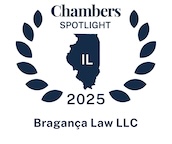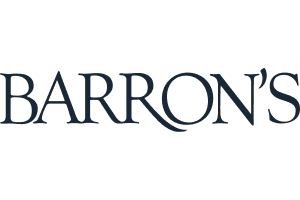- Free Strategy Session: (847) 906-3460 Tap Here to Call Us
Insider Trading Law: Your Guide to 2021

Just before Christmas, the SEC filed insider trading charges against Jason Peltz for trading on nonpublic information he obtained before the March 15, 2016 announcement that a private equity firm had made an offer to acquire Ferro Corp. The SEC alleges that Peltz traded and tipped others who traded on this material nonpublic information. On the same day, the U.S. Attorney’s Office filed criminal charges against Mr. Peltz.
The charges in the Jason Peltz case are classic insider trading so it is worthwhile to review insider trading law, which is judge-made and sometimes confusing, as well as the evidentiary trail that led the SEC to bringing these charges.
What is Insider Trading?
Liability for insider trading is generally based upon Section 10 of the Securities Exchange Act of 1934 and Rule 10b-5, which prohibits the employment of manipulative and deceptive devices in connection with the purchase or sale of a security. While a few additional rules have been added concerning insider trading, insider trading law is primarily defined by judicial decisions.
Insider trading is a general term that refers to purchases or sales of securities based upon confidential nonpublic information that is material. In some cases, such as alleged by the SEC with respect to Mr. Peltz, a trader may obtain the material nonpublic information from company a company insider. Two things are critical to every insider trading case: (1) the information upon which the trades are based must be confidential (nonpublic); and (2) the information must be material.
How Do You Know if You Can Trade on Certain Information?
Not all trading based upon nonpublic or confidential information is illegal. As many economists and commenters have noted, efficient securities markets must have incentives for individuals and firms to invest resources in investigating securities. Developing expertise in certain companies or industries may require a significant investment in time. If parties who invest in developing that expertise were unable to benefit from their investment, markets might operate less efficiently. Whether particular insider trading is illegal is determined on a case-by-case basis.
Confidential or Nonpublic Information
In order to prevail on charges of insider trading, the SEC must prove that the information upon which the defendant traded was nonpublic and material. The determination of whether information is nonpublic is made on a case-by-case basis. In general, this is not a difficult factor to consider. Companies generally have procedures in place to identify particularly confidential information and to remind those who have access to this information that they have a duty to keep it confidential.
In the case of Jason Peltz, the SEC alleges the nonpublic information is the interest of a private equity firm in acquiring Ferro Corp. According to the SEC’s complaint, this information was discussed at a Ferro Corp. board meeting attended by a board member who was a friend of Mr. Peltz. As a board member, this friend would have a duty of trust and confidence requiring that he not disclose confidential or nonpublic information he obtains as part of his board service. That duty of trust or confidence was clarified to some degree in Rule 10b5-2.
Courts have wrestled with situations where a family member or confidante of an insider “misappropriates” the confidential information and trades upon it. Rule 10b5-2 codifies the caselaw addressing when someone receiving material nonpublic information has a duty to refrain from trading on it or tipping others who then trade on it. In some cases, groups may expressly enter into an agreement to maintain the confidentiality of information. In other cases, there is a history, pattern, or practice of the parties sharing confidences such that the recipient of the information knows or reasonably should know that the disclosing person expects the information to remain confidential. In some cases, the family relationship – spousal, parent/child, sibling – is presumed to carry with it a duty of trust or confidence which may be rebutted.
The Houston Chronicle reports that the friend/board member was CEO and Chairman of Tronox Holdings Jeffry Quinn. It is possible that Mr. Quinn disclosed the potential acquisition of Ferro Corp. to his friend Jason Peltz believing that Peltz would keep that information confidential. That may have been the history, pattern, or practice between these gentlemen. Even though it seems the SEC has decided that must be the case – because they did not charge Mr. Quinn with tipping Mr. Peltz – Mr. Quinn is suffering from the betrayal of his trust. Tronox announced that Mr. Quinn is taking a leave of absence as a result of his involvement in the SEC insider trading case against Mr. Peltz.
Materiality
In order to prevail on charges of insider trading, the SEC must also prove that the information upon which the defendant traded material. Companies have lots of nonpublic information but not all that nonpublic information is material – meaning important to an investor. The term material is not defined by statute. The standard for determining materiality was set forth by the U.S. Supreme Court as follows:
A fact is material if there is a substantial likelihood that a reasonable shareholder would consider it important in deciding how to [act]…. [T]here must be a substantial likelihood that the disclosure of the omitted fact would have been viewed by the reasonable investor as having significantly altered the ‘total mix’ of information made available.
Basic v. Levinson, 485 U.S. 224, 231 (1988); TSC Industries, Inc. v. Northway, Inc., 426 U.S. 438, 448 (1976). Courts applying this standard to events must assess (1) the probability that the event will occur, (2) the anticipated magnitude of the event, and (3) the totality of the company activity.
It is frequently the case that the interest of one entity in acquiring another entity is material. Here that fact is reinforced by what happened to Ferro Corp.’s stock price when the potential acquisition was publicly announced. This information was not released to the public until March 15, 2016. After the announcement, the price of Ferro’s stock increased by about 5% and trading volume increased significantly. The post-announcement price increase is evidence that investors in the marketplace considered Ferro Corp. more valuable once they learned of the potential acquisition.
Note: I find it interesting that the SEC seems not to have established that the board member/friend attended the Ferro board meeting because its allegation of that fact is “upon information and belief.” That means they do not have sufficient evidence in hand to allege that as a fact. In insider trading cases, the SEC typically confirms this kind of fact from company minutes of the board meeting, indicating who attended and what was discussed, or from attendees at the meeting. It is interesting that they appear to lack that confirmation in this case.
How Does the SEC Decide to Investigate Certain Trades?
The SEC’s litigation release points out that the case originated from the SEC Market Abuse Unit’s Analysis and Detection Center. The SEC has developed specialized enforcement units, like the Market Abuse Unit, to develop and use new technological tools and quantitative and statistical metrics to evaluate trading activity. The Analysis and Detection Center is made up of industry specialists who have analytical, statistical, programming, or investigative skills. These specialists look for patterns in trading data that might indicate illegal activity, such as insider trading.
Even before the creation of this specialized unit, the SEC brought many insider trading cases. The SEC would investigate trading around the time of the announcement of an acquisition or significant good or bad news. That analysis would be conducted by analyzing “blue sheet” data on trading from brokerage firms and sometimes on the market surveillance analyses conducted by FINRA or other self-regulatory organizations. Investigations might be initiated based upon old fashioned tips as well.
What is notable lately is that the SEC brings more small-dollar insider trading cases. This is likely because the more sophisticated tools that it has identified unusual trading regardless of whether the trading reaches a particular threshold.
Once the SEC notes suspicious trading activity, the Staff can obtain information about the accounts in which the trading occurred from brokerage firms. The SEC can obtain information from the company (here Ferro Corp.) about the timeline for the transaction and key personnel who were involved. Often, the SEC or other regulators will ask the company to circulate a list of the names of account holders in which trades were made to determine whether anyone at the company recognizes them.
With respect to Jason Peltz, the SEC identifies an account in which Ferro stock and options were purchased for the first time just three days after the board meeting at which the potential acquisition was discussed. Purchases were made in this and other accounts until immediately before the public announcement on March 15, 2016. The SEC alleges that an IP address for Peltz’s company accessed the account minutes before the account started making its purchases. The SEC also alleges there were numerous calls and texts between the account holder and Peltz.
The SEC complaint details the evidence that it obtained showing Peltz’s connection to an overseas account that also made purchases of Ferro stock and options after the board meeting and before the public announcement of the acquisition. The SEC complaint alleges that Peltz directly or indirectly tipped five others who traded in Ferro Corp securities.
How Does the SEC Prove Someone Acted Illegally?
In order to prevail on an insider trading case, a type of fraud, the SEC must prove intent. Intent may be proved with circumstantial evidence. It is not unusual for fraud cases to be brought in the absence of any direct evidence. Courts routinely permit cases to go before a jury based upon purely circumstantial evidence of tipping – such as well-timed calls and texts.
Usually, the SEC will seek on-the-record testimony of the person they suspect of insider trading. This is testimony under oath under penalty of perjury. That is a powerful tool. If a person is later found to have been intentionally untruthful in giving testimony under oath, that person may be criminally prosecuted for perjury. Particularly in investigations, invoking your Fifth Amendment Privilege not to incriminate yourself may be the right course of action.
Sometimes the SEC Staff will try to get a person to submit to an “off the record” interview before they retain an attorney to represent them. If you are not represented by a securities enforcement lawyer who obtains a written agreement that statements will not be used against you, you are courting disaster. It is a criminal offense to be untruthful in talking with an SEC or other federal government investigator. 18 USC §1001. While the SEC discloses that – with a 5-page tiny font document – before conducting an interview, many an unrepresented person will fail to understand the danger. In the absence of a properly structured agreement, the SEC can use the information it obtains in even an “off the record” interview against you.
A Note on Rule 10b5-1 Trading Plans
Rule 10b5-1 was adopted in 2000 to address certain court cases in which someone was aware of material nonpublic information at the time of a purchase or sale of a security but was found by a court to not have executed trades “on the basis” of that information. This rule set forth a method by which insiders like corporate officers, for whom any trading might be deemed insider trading, could create advance trading plans that would constitute good evidence that they were not buying and selling securities in their own companies “on the basis” of confidential insider information. This issue was recently in the news when Pfizer’s CEO sold $5.6 million worth of Pfizer stock the same day Pfizer announced the success of its coronavirus vaccine. Even if you have a pre-established trading plan, the sale of a big block of stock on that date can look really bad.























